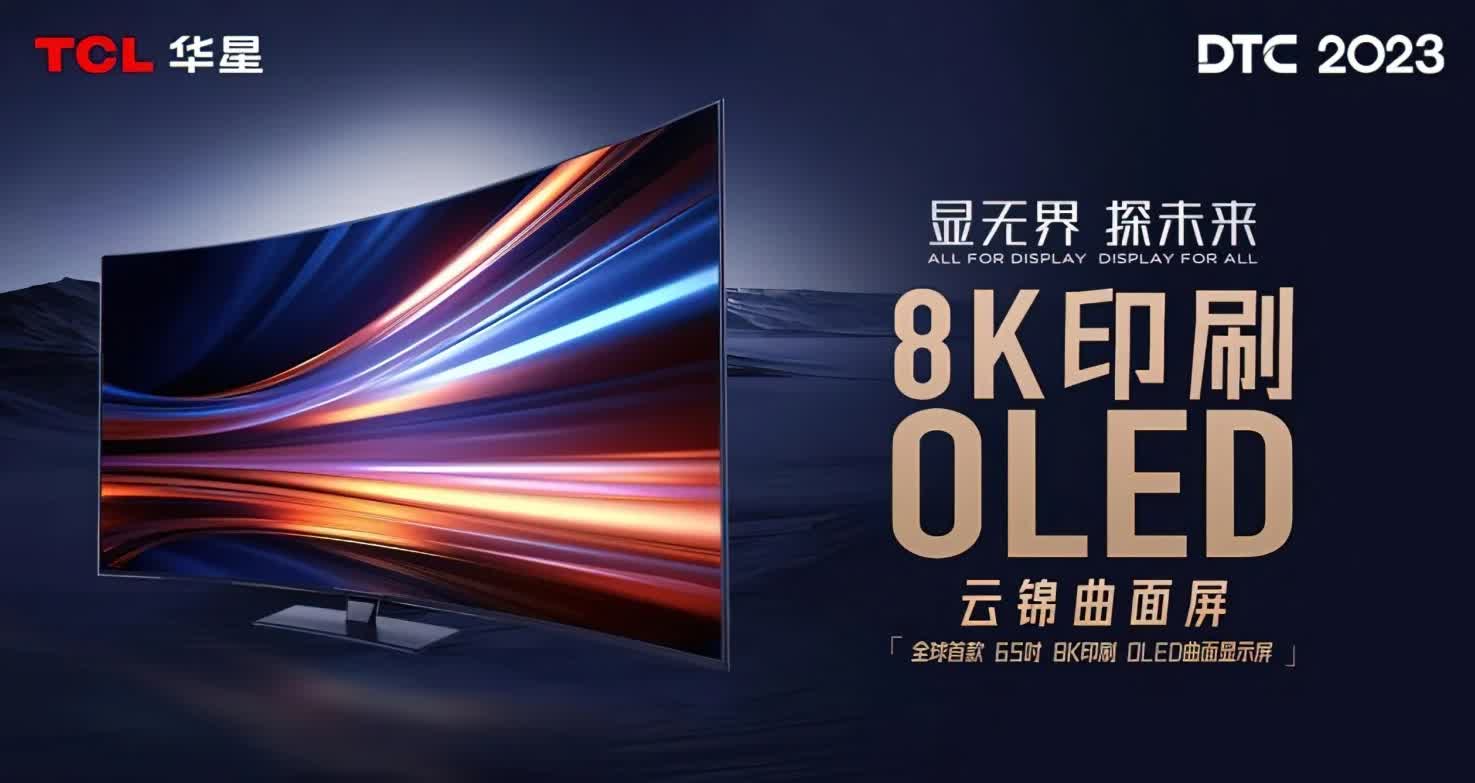Something to look forward to: If you've ever used or seen an OLED monitor, you'll know that they're fantastic for gaming. But they do come with a few drawbacks, not least of which is their usually high prices. But TCL says its new display tech manufacturing process will not only make these OLEDs brighter, longer lasting, and less power hungry, but it will also result in cheaper end products.
At the recent Omdia Korea Display Conference, Ming-Jong Jou, Chief of the Technology Planning Center, talked more about CSOT (TCL's manufacturing arm) and its inkjet-printed OLED technology.
As the name suggests, the technique uses large, precise inkjet printers to produce the displays. This reduces the amount of generated waste material compared to traditional OLED production, which relies on evaporation processes in which the organic materials are deposited onto a glass sheet through a thin metal stencil.
Inkjet printing is currently used in the encapsulation layer deposition process in most modern OLED production and to deposit the quantum dots in Samsung QD-OLEDs, writes OLED-info. TCL is expanding it into the emitters and other stack materials.
As reported by flatpanelshdHD, TCL CSOT claims its printed RGB OLED now has a 50% reduction in light loss due to internal reflection, and a 1.5 times improvement in light output efficiency. The lifespan has also been significantly enhanced.
Moreover, the company says it has achieved all this while also reducing total manufacturing costs by 20% and shortening the product development cycle by 30%.
This isn't the first time we've heard about TCL's inkjet printing methods. In 2023, the Chinese firm showed off a 65-inch prototype OLED panel (above) with an 8K resolution, 120Hz refresh rate, and a 1800R curve built using the technology. TCL said at the time that inkjet printing increases the utilization rate of luminescent materials by two times to 90 percent while reducing blue light radiation by 50 percent.
TCL has also showed off other products that used the process, including a 31-inch 4K dome-shaped OLED, and a 14-inch 2.8K laptop OLED.
According to reports, TCL CSOT plans to begin small-scale production of inkjet-printed OLED panels by the end of this year, starting with a 21.6-inch 4K OLED panel for medical monitors. It aims to expand production to medium-sized OLED panels for IT devices (i.e., laptops and monitors) in 2025.

